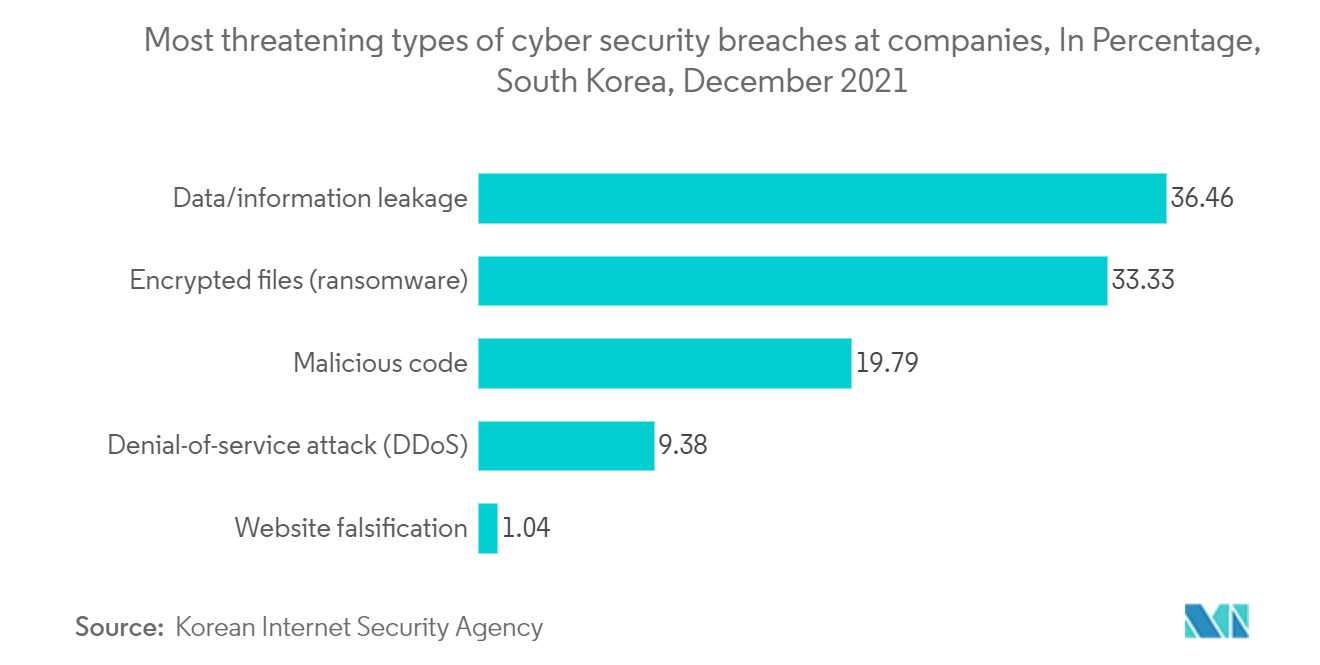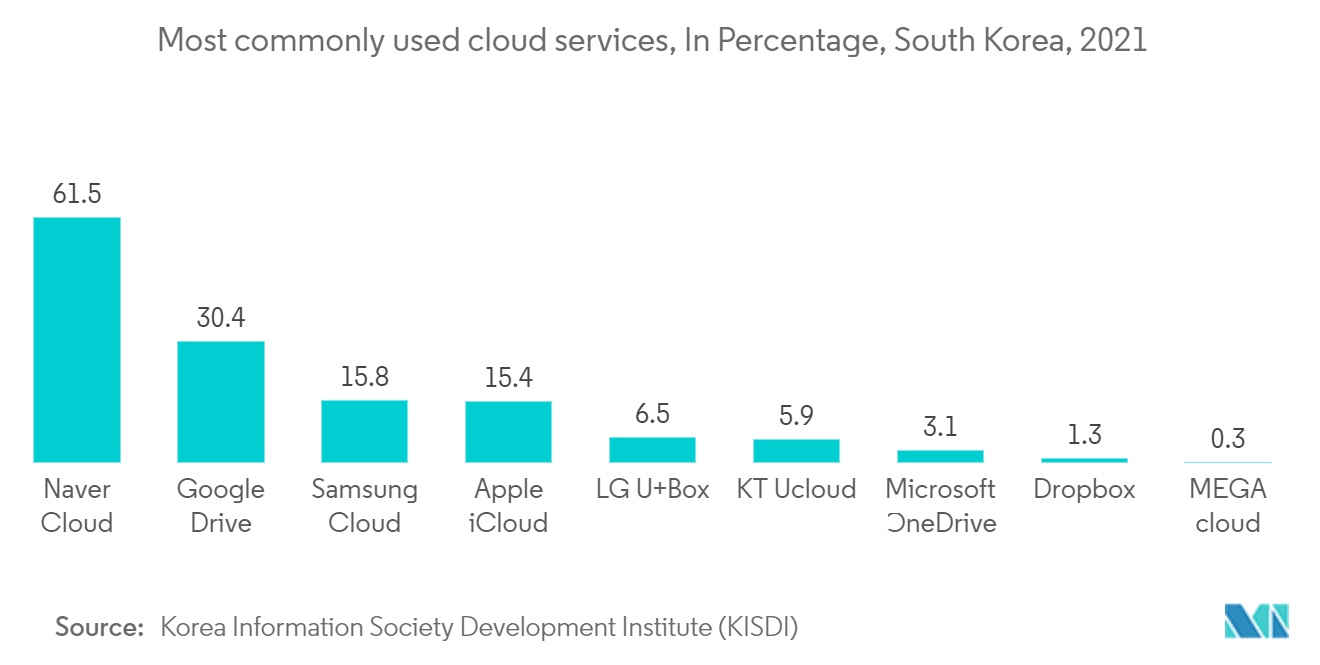Market Trends of South Korea Cybersecurity Industry
This section covers the major market trends shaping the South Korea Cybersecurity Market according to our research experts:
Increasing Cybersecurity incidents is driving the market
- Cybersecurity incidents suspected of originating from North Korea have become increasingly sophisticated in South Korea (Republic of Korea-ROK) by stealing information and millions of dollars, spreading a sense of vulnerability in Korean society. These cyberattacks from North Korea have disrupted information and communications technology (ICT) systems in the ROK government and the country's private sector.
- Incidents of ransomware attacks in South Korea have surged in the past year, shutting hospitals to shopping malls as the coronavirus pandemic led to increased online activities. According to the ICT ministry of South Korea, the country reported 78 ransomware attacks in the first half of 2021.
- In June 2021, South Korea's Nuclear Research Agency, Korea Atomic Energy Research Institute, revealed that their internal networks were hacked by North Korean threat actors using a VPN vulnerability. Such incidents threaten the country and increase the need for cybersecurity solutions across various end-user verticals.
- Moreover, In June 2021, HHM, a South Korean container transportation and shipping company, confirmed that it had detected an unidentified security breach that led to limited access to the e-mail outlook system in certain areas.
- A group of researchers from the Korean Advanced Institute of Science and Technology Constitution (KAIST) based in South Korea identified over 36 mobile security vulnerabilities in LTE mobile data protocol. This makes cybersecurity solutions an essential component and thereby contributing to market growth.

Cloud Deployment Drives the Market Growth
- Many organizations are shifting toward cloud solutions to simplify data storage and provide remote server access on the internet, enabling access to unlimited computing power. Implementing the cloud-based model allows organizations to manage all the applications, providing challenging analytics running in the background.
- Security has been critical at each step of the cloud adoption cycle, as IT provision has moved from on-premise to outside of the company's walls. SMEs prefer cloud deployment as it allows them to focus on their core competencies rather than invest their capital in security infrastructure since they have limited cybersecurity budgets.
- Additionally, the increased adoption of cloud-based email security services is driving the adoption of services integrated with other security platforms, such as IPS and NGFW. This trend is demotivating enterprises to spend on on-premise and dedicated email or web security solutions.
- In March 2022, Alibaba Cloud announced the launch of its first data center in South Korea. The company will offer South Korean customers more secure, reliable, and scalable cloud services, underlining its commitment to empowering South Korean businesses with digital transformation. Such instances will increase the demand for cybersecurity in the country.
- Moreover, In May 2021, Microsoft announced the launch of its first Asia Pacific Public Sector Cyber Security Executive Council across seven markets in the region, including South Korea. The council aims to accelerate public-private partnerships in cybersecurity, share threat intelligence and build a strong and coordinated response against cyberattacks in the region.


